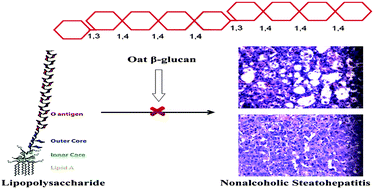Oat β-glucan inhibits lipopolysaccharide-induced nonalcoholic steatohepatitis in mice
Abstract
Nonalcoholic steatohepatitis (NASH) is part of the spectrum of nonalcoholic fatty liver disease. However, there are few suitable animal models to study the pathogenesis of NASH or very limited advances in the prevention. Our aims were to establish a mouse model of NASH by intraperitoneally injecting lipopolysaccharide (LPS) at a dose of 1.5 mg per kg body weight per day for 6 weeks and to investigate the potential inhibitory effects of oat β-glucan (1%, 5%, or 10%) added to a specific pathogen-free diet. Intraperitoneal injection of LPS for 6 weeks increased serum LPS levels; decreased serum glucagon-like peptide-2 levels; triggered abnormal aminotransferase activity, glucose intolerance, and insulin resistance; and increased hepatic proinflammatory cytokines (tumor necrosis factor-α, interleukin-6, interleukin-1β), triglyceride, and malonyl dialdehyde levels; but reduced hepatic superoxide dismutase activity. Histologic evaluation revealed evidence of hepatic steatosis, inflammation, and mild necrosis in LPS-treated mice. Dietary supplementation of oat β-glucan prevented most of the LPS-induced metabolic disorders, and improved hepatic steatosis and inflammation, although a dose-dependent effect was not observed. In conclusion, oat β-glucan could inhibit LPS-induced NASH in mice.


 Please wait while we load your content...
Please wait while we load your content...